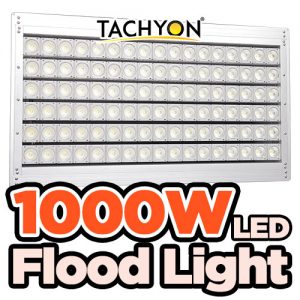LEDs are optoelectronic devices that use compound materials to make pn junctions. It has the electrical characteristics of pn junction junction devices: I-V characteristics, C-V characteristics and optical characteristics: spectral response characteristics, luminous intensity directivity characteristics, time characteristics and thermal characteristics.
1. LED Electrical Characteristics
1.1 I-V Characteristics
Characterize the main parameters of LED chip PN junction fabrication performance. The I-V characteristics of LEDs have nonlinear and rectifying properties: unidirectional conductivity, that is, low contact resistance with positive bias, and high contact resistance on the contrary.
(1) Forward dead zone: point a is the turn-on voltage for V0. When V<Va, the applied electric field still overcomes a lot of the barrier electric field formed due to carrier diffusion, and R is very large at this time. The turn-on voltage varies for different LEDs, 1V for GaAs, 1.2V for red GaAsP, 1.8V for GaP, and 2.5V for GaN.
(2) Forward working area: the current IF has an exponential relationship with the applied voltage
IF = IS (e qVF/KT –1) ———————- IS is the reverse saturation current .
When V>0, the forward working region IF of V>VF increases with the VF index IF = IS e qVF/KT.
(3) Reverse dead zone: when V<0, reverse bias is applied to the pn junction.
When V = – VR, when the reverse leakage current IR (V = -5V), GaP is 0V, GaN is 10uA.
(4) Reverse breakdown region V <- VR, VR is called reverse breakdown voltage. VR voltage corresponding to IR is reverse leakage current. When the reverse bias voltage keeps increasing so that V<- VR, the IR suddenly increases and the breakdown phenomenon occurs. Due to the different types of compound materials used, the reverse breakdown voltage VR of various LEDs is also different.
1.2 C-V Characteristics
Considering that the LED chips are 9×9mil (250×250um), 10×10mil, 11×11mil (280×280um), 12×12mil (300×300um). Therefore, the pn junction area varies in size, so that the junction capacitance (zero bias) is about C≈n+pf.
The C-V characteristic has a quadratic function relationship. Measured by a 1MHZ AC signal with a C-V characteristic tester.
1.3 Maximum allowable power consumption PF m
When the current flowing through the LED is IF and the tube voltage drop is UF, the power consumption is P=UF×IF.
When the LED is working, the external bias voltage and bias current will definitely promote the recombination of the carriers to emit light, and some of them will become heat, which will increase the junction temperature. If the junction temperature is Tj and the external ambient temperature is Ta, then when Tj>Ta, the internal heat is transferred to the outside through the tube base, and the heat (power) is dissipated, which can be expressed as P = KT (Tj – Ta).
1.4 Response time
Response time describes how quickly a display can track changes in external information. There are several kinds of display LCD (liquid crystal display) about 10-3~10-5S, CRT, PDP, LED all reach 10-6~10-7S (us level).
① Response time, from the point of view of use, is the delay time between the on and off of the LED.
② The response time mainly depends on the carrier lifetime, the junction capacitance of the device and the circuit impedance.
The lighting time of the LED – the rise time tr refers to the time from when the power is turned on to make the luminous brightness reach 10% of the normal value, until the luminous brightness reaches 90% of the normal value.
LED off time – fall time tf refers to the time it takes for the normal light emission to decrease to 10% of the original.
LEDs made of different materials have different response times. For example, the response time of GaAs, GaAsP, and GaAlAs is less than 10-9S, and GaP is 10-7S. So they can be used in 10~100MHZ high frequency system.
2 LED Optical Characteristics
There are two series of light-emitting diodes: infrared (non-visible) and visible light. The former can be used for radiance, and the latter can be measured by photometry.
2.1 Luminous normal light intensity and its angular distribution Iθ
2.1.1 Luminous intensity (normal light intensity)
It is an important performance to characterize the luminous intensity of light-emitting devices. A large number of LED applications require cylindrical and spherical packages. Due to the action of the convex lens, they all have strong directivity: the light intensity is the largest in the normal direction, and its intersection angle with the horizontal plane is 90°. When deviating from the positive normal at different θ angles, the light intensity also changes. The luminous intensity depends on the angular direction of the intensity with different package shapes.
2.1.2 Angular distribution of luminous intensity
Iθ is a parameter describing the light intensity distribution of LED light in all directions in space. It mainly depends on the packaging process, including brackets, die heads, and whether or not a scattering agent is added to the epoxy resin.
⑴ In order to obtain the angular distribution of high directivity,
① The position of the LED die is farther from the die head,
② Use a conical (bullet) die head,
③ Do not add scattering agent to the encapsulated epoxy resin.
Taking the above measures can make the LED 2θ1/2 = about 6°, which greatly improves the directivity.
(2) The scattering angle of several commonly used packages (2θ1/2 angle)
Circular LED: 5°, 10°, 30°, 45°
2.2 Luminescence peak wavelength and its spectral distribution
⑴ spectral distribution curve
The luminous intensity or optical power output of LEDs varies with wavelength and is drawn as a distribution curve—spectral distribution curve. After this curve is determined, the relevant colorimetric parameters such as the dominant wavelength and purity of the device are also determined accordingly.
The spectral distribution of the LED is related to the type, properties and pn junction structure (epitaxial layer thickness, doping impurities) of the compound semiconductor used in the preparation, and has nothing to do with the geometry and packaging of the device.
Several LED spectral response curves were prepared from different compound semiconductors and doping.
LED spectral distribution curve
- Blue InGaN/GaN
- Green GaP:N
- Red light GaP:Zn-O
- Infrared GaAs
- Si photosensitive photocell
- Standard Tungsten Lamp
Blue InGaN/GaN light-emitting diode, emission peak λp = 460~465nm,
Green GaP:N LED, emitting spectral peak λp = 550nm,
Red GaP:Zn-O LED, emission spectral peak λp = 680~700nm,
Infrared LED uses GaAs material, the emission spectrum peak λp = 910nm,
Si photodiodes are usually used for photoelectric reception.
No matter what material an LED is made of, there is a place where the relative light intensity is the highest (the light output is the greatest). Correspondingly, there is a wavelength, which is called the peak wavelength, and is represented by λp. Only monochromatic light has λp wavelength.
⑵ spectral line width:
At ±Δλ on both sides of the peak of the LED spectral line, there are two points where the light intensity is equal to half of the peak (maximum light intensity), and these two points correspond to λp-△λ respectively. The width between λp+△λ is called spectral line width, also known as half-power width or half-height width.
The width at half maximum reflects the narrow spectral line width, that is, the parameter of the monochromaticity of the LED, and the half width of the LED is less than 40 nm.
(3) Dominant wavelength:
Some LEDs emit not only a single color, that is, not only one peak wavelength, but even multiple peaks, not monochromatic light. To this end, the dominant wavelength is introduced to describe the LED chromaticity characteristics. The dominant wavelength is the wavelength at which the main monochromatic light emitted by the LED can be observed by the human eye. The better the monochromaticity, the λp is also the dominant wavelength.
For example, GaP materials can emit multiple peak wavelengths, while there is only one dominant wavelength. As the LED works for a long time, the junction temperature increases and the dominant wavelength shifts to the long wavelength.
2.3 Luminous flux
The luminous flux F is the radiant energy that characterizes the total light output of the LED, and it marks the performance of the device. F is the sum of the energy emitted by the LED in all directions, which is directly related to the working current. As the current increases, the LED luminous flux increases. The unit of luminous flux of visible light LEDs is lumens (lm).
The power radiated from the LED – the luminous flux is related to the chip material, the level of packaging technology and the size of the external constant current source. At present, the maximum luminous flux of monochromatic LED is about 1 lm. And the F ≈ 1.5~1.8 lm (small chip) of white LED. For a 1mm×1mm power stage chip made of white LED, its F=18 lm.
2.4 Luminous efficiency and visual acuity
① LED efficiency has internal efficiency (the efficiency of converting electrical energy into light energy near the pn junction) and external efficiency (the efficiency of radiation to the outside). The former is only used to analyze and evaluate the characteristics of the chip.
The most important characteristic of LED optoelectronics is the ratio of the radiated light energy (luminous amount) to the input electrical energy. That is, the luminous efficiency.
② Visual sensitivity is the use of some parameters in lighting and photometry. Human visual acuity has a maximum value of 680 lm/w at λ = 555nm. If the visual sensitivity is recorded as Kλ, the relationship between the luminous energy P and the visible luminous flux F is P=∫Pλdλ, F=∫KλPλdλ.
③ Luminous efficiency – quantum efficiency η = number of photons emitted / number of pn junction carriers = (e/hcI) ∫λPλdλ.
If the input energy is W=UI, then the luminous energy efficiency ηP=P/W.
If the photon energy hc=ev, then η≈ηP, then the total luminous flux F=(F/P) P=KηPW where K= F/P
④ Lumen efficiency: LED luminous flux F / additional power consumption W = KηP
It is an indicator for evaluating the characteristics of LEDs with external packaging. The high lumen efficiency of LED means that the energy of radiating visible light is larger under the same applied current. So it is also called visible light luminous efficiency.
(To Be Continued)




